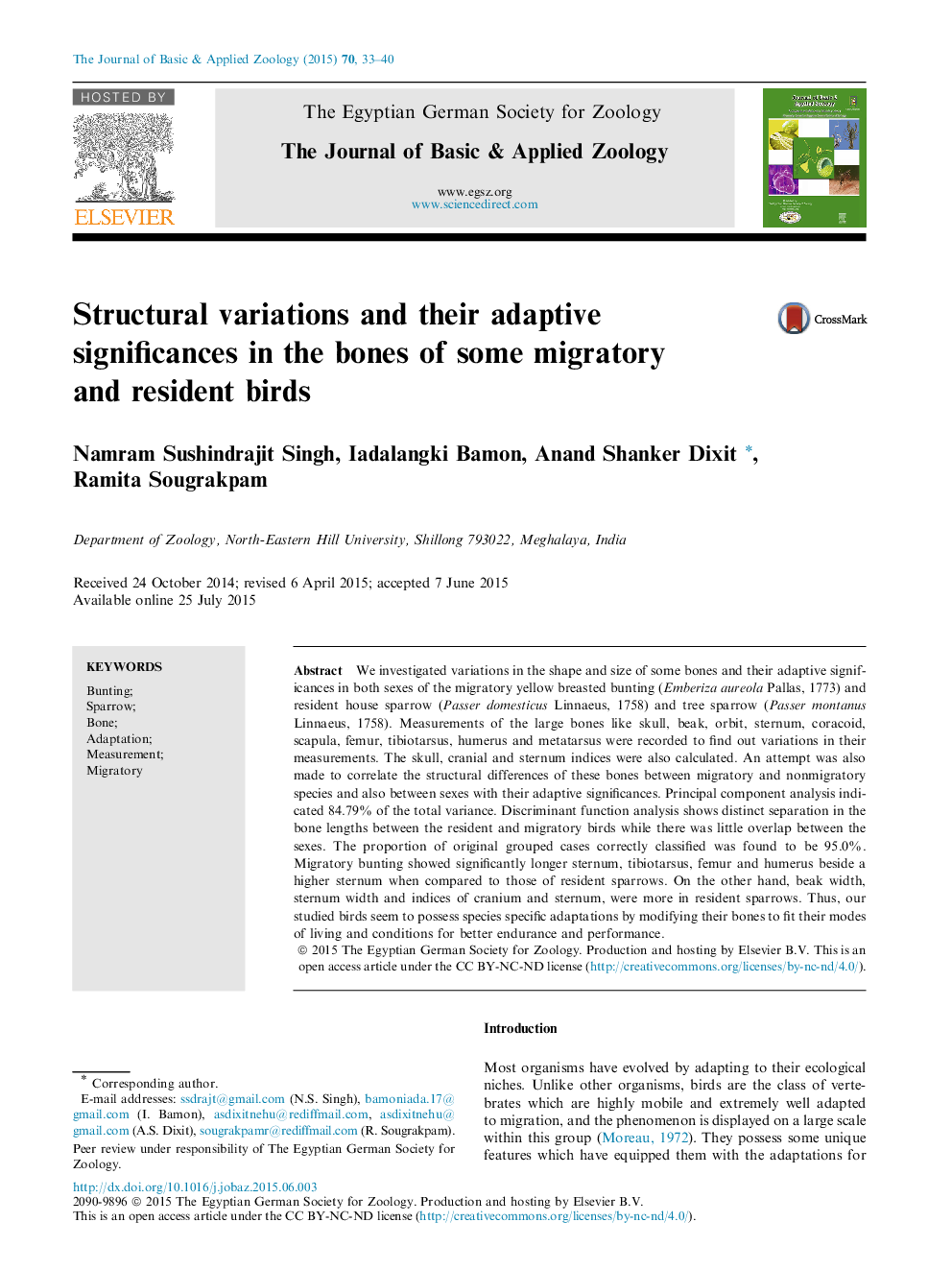| Article ID | Journal | Published Year | Pages | File Type |
|---|---|---|---|---|
| 4493429 | The Journal of Basic & Applied Zoology | 2015 | 8 Pages |
We investigated variations in the shape and size of some bones and their adaptive significances in both sexes of the migratory yellow breasted bunting (Emberiza aureola Pallas, 1773) and resident house sparrow (Passer domesticus Linnaeus, 1758) and tree sparrow (Passer montanus Linnaeus, 1758). Measurements of the large bones like skull, beak, orbit, sternum, coracoid, scapula, femur, tibiotarsus, humerus and metatarsus were recorded to find out variations in their measurements. The skull, cranial and sternum indices were also calculated. An attempt was also made to correlate the structural differences of these bones between migratory and nonmigratory species and also between sexes with their adaptive significances. Principal component analysis indicated 84.79% of the total variance. Discriminant function analysis shows distinct separation in the bone lengths between the resident and migratory birds while there was little overlap between the sexes. The proportion of original grouped cases correctly classified was found to be 95.0%. Migratory bunting showed significantly longer sternum, tibiotarsus, femur and humerus beside a higher sternum when compared to those of resident sparrows. On the other hand, beak width, sternum width and indices of cranium and sternum, were more in resident sparrows. Thus, our studied birds seem to possess species specific adaptations by modifying their bones to fit their modes of living and conditions for better endurance and performance.
